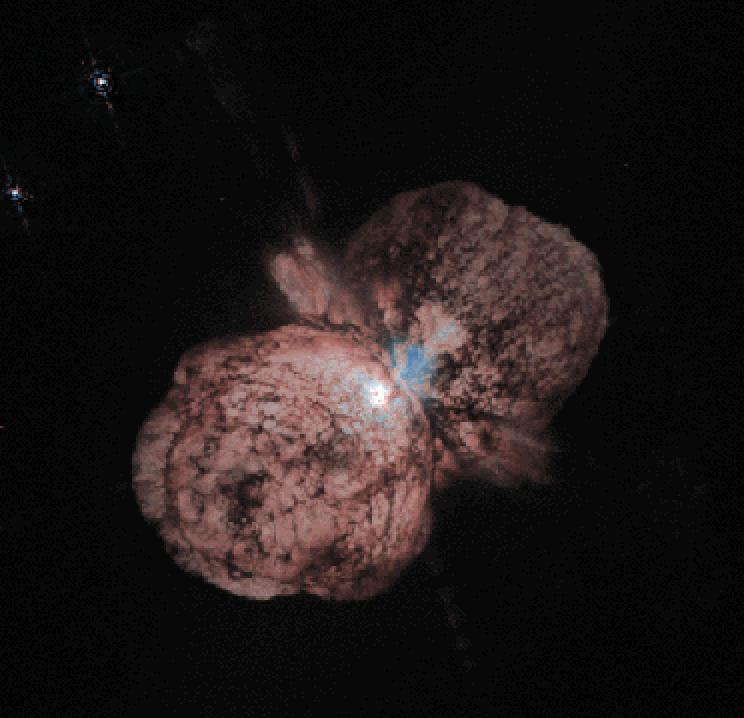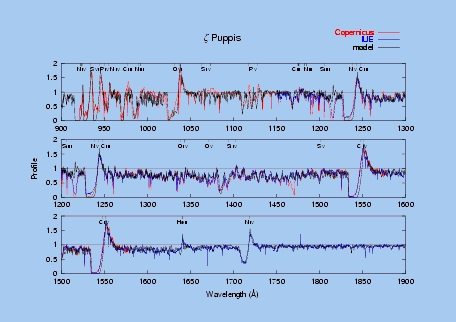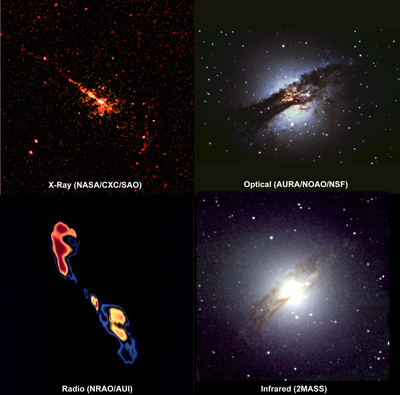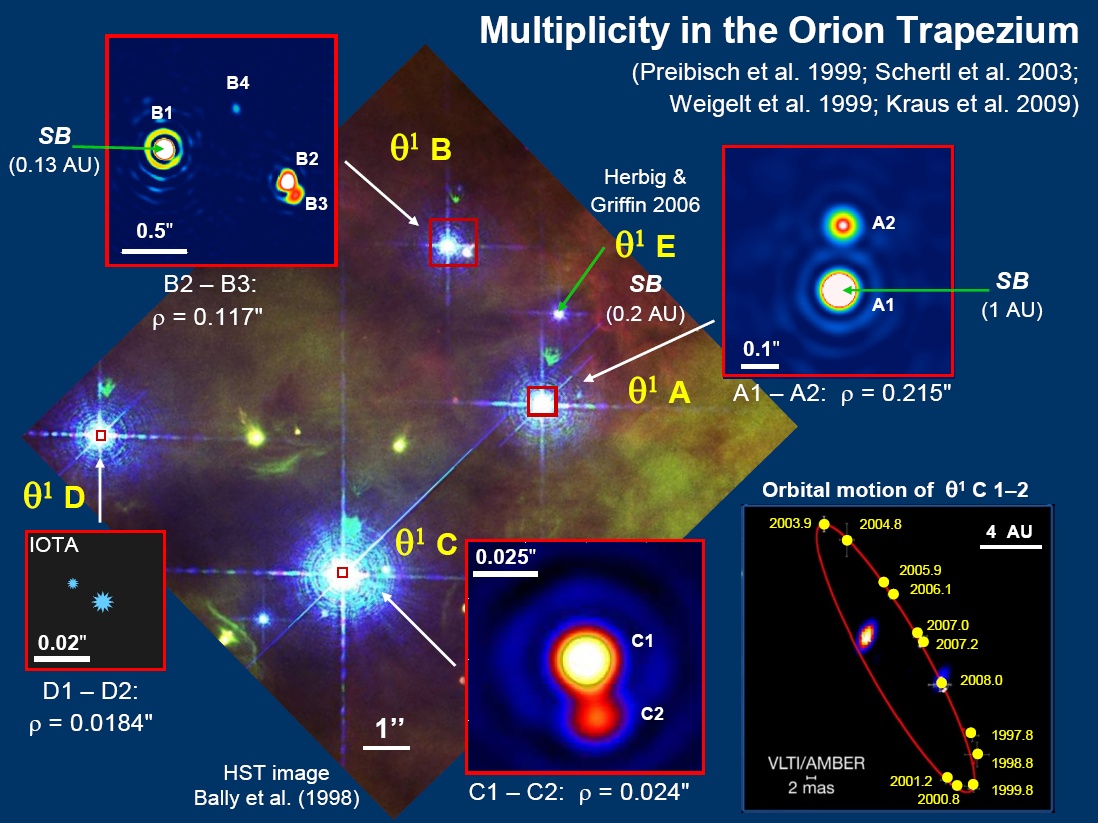![[LMU-Logo]](/graphics/lmulogoboxes.png)
|
Universitäts-Sternwarte MünchenFakultät für Physik der Ludwig-Maximilians-Universität |
![[USM-Logo]](/graphics/usmlogo.png) ![[LMU-Siegel]](/graphics/lmusiegelbox.png)
|
Leider existiert keine deutsche Version. english version
Fields of research for PhD projects
Extragalactic Astronomy and CosmologyThe USM-MPE extragalactic research group is a joint effort of the University Observatory of Munich (USM) and the Max Planck Institute for Extraterrestrial Physics. The group is located both at the USM and at MPE. Senior group members are Prof. Ralf Bender, Dr. Maximilian Fabricius, Prof. Ortwin Gerhard, Dr. Ulrich Hopp, Dr. Arno Riffeser, P.D. Dr. Roberto P. Saglia, Dr. Ariel G. Sanchez, Dr. Stella Seitz, and Dr. Jens Thomas. The research of the group focuses on dark energy and dark matter in the Universe, on the properties of local and distant galaxies, and on extrasolar planets. The aims of our current science projects are:
We pursue these science questions with a combination of optical and near-infrared observations, theory, numerical modelling, and data interpretation. The observational data necessary for our scientific programs come from a large variety of telescopes, primarily ESO, the Hobby-Eberly Telescope HET, the 2.7-m telescope of the McDonald observatory, the USM 2-m Fraunhofer telescope at the Wendelstein observatory in the Bavarian Alps and also space (HST) and survey (e.g., SDSS) telescopes. We also have guaranteed access to telescopes for providing instruments (e.g., OmegaCAM, KMOS, MICADO). We carry out studies of black holes in local galaxies without active galactic nuclei, measuring their masses through stellar dynamics. Using similar techniques we reconstruct the stellar orbital distributions and dark matter halos of dwarf and giant early-type galaxies or globular clusters. Exploiting the multiplexing capabilities of our KMOS spectrograph, we study galaxy evolution up to redshift 2.5 by observing large samples of star-forming and passive galaxies. Our group also participates with a significant role in large international surveys. Examples are the completed Baryon Oscillation Spectroscopic Survey BOSS, the on-going extended BOSS (eBOSS) and Dark Energy Survey (DES), and future surveys such as the Hobby-Eberly Telescope Dark Energy Experiment (HETDEX) and the ESA space mission Euclid. Galaxy clustering and gravitational lensing measurements based on these data sets probe the large-scale structure of the universe with unprecedented precision, providing invaluable information on the nature of dark matter and dark energy, the growth of structure, neutrino masses, and inflationary physics. The design, construction, analysis, modelling, and interpretation of these data sets are some of the main activities of our group. The numerical modelling required for our projects is based on state-of-the-art algorithms run on supercomputers. Some of these methods are developed or implemented within our group. Recent examples are Schwarzschild’s orbit superposition method used for measuring black hole masses, and the NMAGIC adaptive N-body code for modelling galaxy dynamics. This year we offer PhD projects within our group in the following science areas:
For more details visit our homepages OPINAS or PhD-Thesis Projects. Structure Formation and CosmologyThe research group on Cosmology and Structure Formation is pursuing studies in cosmology and the formation and evolution of large scale structures in the universe. Our work is at the interface of observation and theory, where we seek to bring together new observational constraints with state of the art hydrodynamical simulations of structure formation. We are pursuing cosmological topics such as the nature of the cosmic acceleration and the characteristics of the initial density perturbations. Our ongoing structure formation studies focus on the properties and evolution of the large scale structure, including clusters of galaxies, the most massive collapsed structures in the universe. Senior group members are Prof. J. Mohr, Dr. G. Bazin. Opportunities exist for those who might be interested in the South Pole Telescope Sunyaev-Zel’dovich Effect survey for galaxy clusters. Here in Munich we are centrally involved in the optical and X-ray followup of these systems, which are very cleanly selected, high mass systems extending to redshifts z > 1. These are truly unique and rare systems and are therefore well suited for cosmology if we can successfully characterize their masses using weak lensing, velocity dispersions and X-ray observations. The SPT sample contains about 280 systems presently and will end with approximately 500 massive clusters with accurate individual cluster mass estimates, providing an unparalleled sample for studies of cosmology, non-Gaussianity and the evolution of large scale structure. There are also opportunities to become involved in the Dark Energy Survey, which is a 5000 deg2, deep multiband optical survey of the southern sky that will begin in Fall 2011. Our group is focused on cluster science, large scale structure and weak lensing studies. In addition, we are involved in the development of the data management system for processing, calibrating and archiving these data. This familiarity with the data gives members of our group advantages in pursuing any analyses that push the data to their limits. We are working to develop the science case and novel analysis techniques for the eROSITA all sky X-ray survey (PI Dr. Peter Predehl, MPE). This survey will begin in 2013 and will deliver a sample of 105 galaxy clusters and 106 AGN that, in combination with the multi-wavelength optical surveys like the Dark Energy Survey and Pan-STARRS1, should provide the ideal sample for cosmological studies using galaxy clusters and for structure formation and evolution studies using both clusters and AGN. Finally, there are opportunities to get involved with hydrodynamical simulations of large scale structure. Our group, in collaboration with Dr. Klaus Dolag at USM, is also focused on delivering a next generation hydrodynamical simulation that will reach a volume of 1 cubic gigaparsec with sufficient resolution to follow the formation and evolution of galaxies. These simulations will be central to a wide range of forefront studies, and we expect to pursue some of these studies in combination with data from SPT, DES and eROSITA. We offer PhD projects within our group in any of the above science areas. Some examples of PhD projects:
Computational and Theoretical AstrophysicsResearch in the Computational Astrophysics Group (CAST) ranges from the theoretical investigation of star and planet formation to studies of processes on cosmological scales. A variety of different, well-known numerical codes (such as Ramses, Gadget, Sauron, Gandalf, Mocassin, and others) are used. Primary investigations regard the formation, the structure, and the evolution of protoplanetary discs, the formation of planetary building blocks and planets, the relation between turbulence and phase transitions in the multiphase interstellar medium (ISM), energetic feedback processes, molecular cloud and star formation in galaxies as well as cosmological structure and galaxy formation and the interplay between feedback processes, AGN and galaxy evolution and their imprint on the intergalactic medium (IGM) or the intercluster medium (ICM). Thus, our group studies astrophysical processes on length scales covering more than 14 orders of magnitude, from gigaparsec scales of cosmological structures all the way down to sub-AU scales of dust grains within protoplanetary discs. 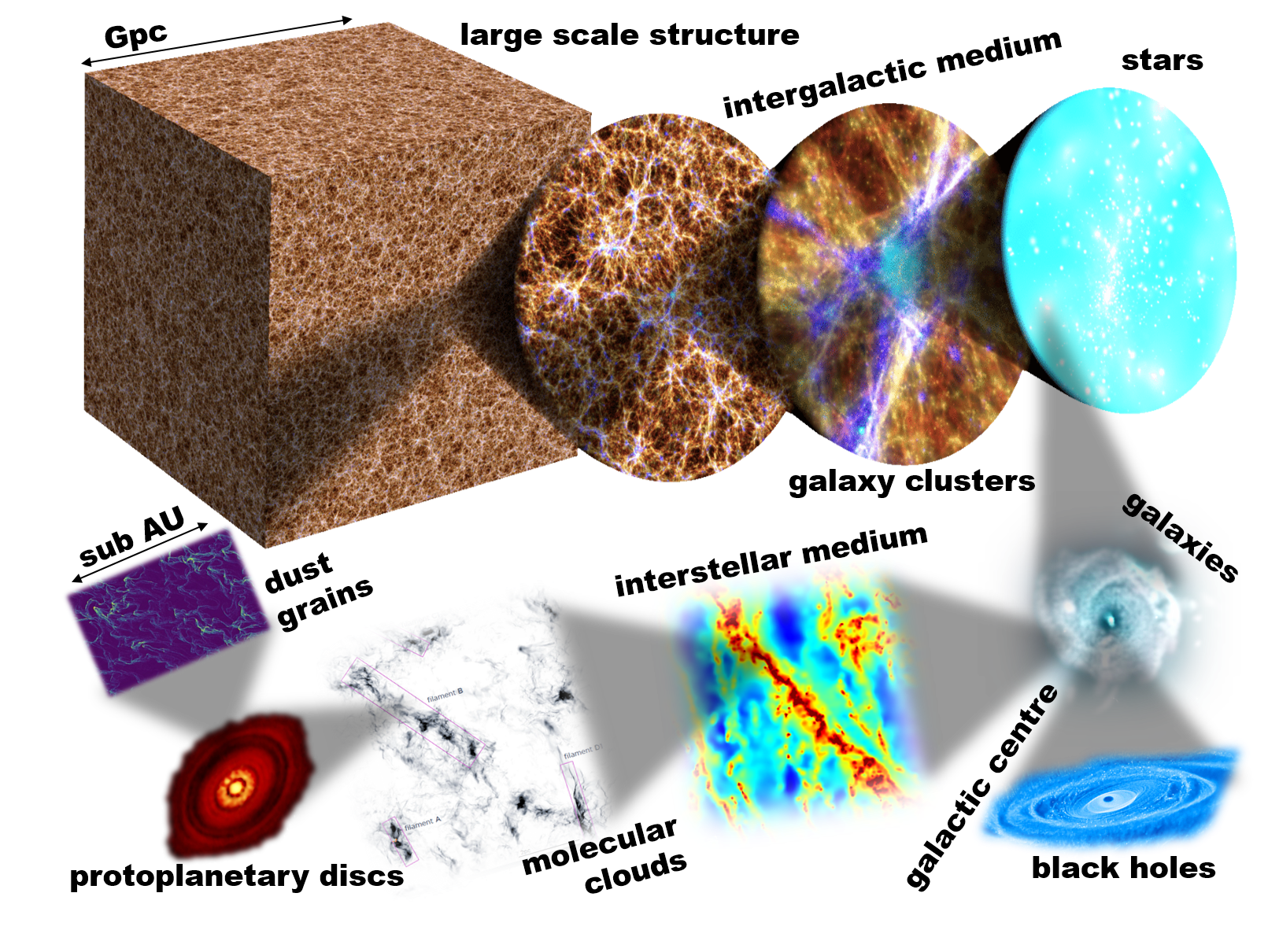
It is now clear that small-scale processes like the condensation of molecular clouds into stars, magnetic fields and the details of heat transport as well as large-scale processes like gas infall from the cosmic web into galaxies and environment are intimately coupled and have to be investigated in a concerted effort. The various past and ongoing PhD projects within the CAST group cover a link between the various scales and contribute to our understanding of crucial aspects of the formation and evolution of stars and protoplanetary discs, central black holes and AGNs, star-forming regions and the ISM, galaxies and their IGM, galaxy clusters and the ICM as well the large-scale structures in the universe. They also also drive the continuous effort to develop and to apply new numerical methods and the next generation of multi-scale codes within the framework of numerical astrophysics and allow students to interact actively with master and bachelor students. Past and ongoing PhD projects were always offered with respect to the individual strengths and interests of the students and cover various areas in the field of computational and theoretical astrophysics:
More detailed information on ongoing and finished PhD projects as well as more detailed information on ongoing research can be found on the web pages of the computational astrophysics group members: CAST, contact: A. Burkert and K. Dolag; Protoplanetary discs, contact: B. Ercolano and T. Birnstiel; Empirical Galaxy Formation Models, contact: B. Moster. Expanding Atmospheres of Hot Stars, Gaseous Nebulae, and Planetary AtmospheresHot Stars cover sub-groups of objects in different parts of the HR diagram and at different evolutionary stages. The most important sub-groups are massive O/B Stars, Central Stars of Planetary Nebulae, and Supernovae. All these objects have in common that they are characterized by high radiation energy densities and expanding atmospheres. Due to these properties, the state of the outermost parts of these objects is characterized by non-equilibrium thermodynamics and radiation hydrodynamics. The USM Hot Star group is experienced in the corresponding theory, especially of radiative transfer (1d and 3d) and of stellar atmospheres, and accordingly in model simulations and the computation of realistic synthetic spectra for these astrophysically important objects. Senior group members are Prof. A. W. A. Pauldrach, P.D. J. Puls, P.D. K. Butler, Dr. A. Kutepov. Specific topics address the relevance of Hot Stars for current astronomical research:
PhD Projects in this group available on:
The main focus of the working group thus is to develop diagnostic techniques in order to extract the complete physical stellar information from the spectra at all wavelength ranges. More details about the USM Hot Star group and further information on the projects can be found here: http://www.usm.uni-muenchen.de/people/adi/wind.html.
Plasma-AstrophysicsThe Plasma-Physics group at the USM is involved in the research of the macroscopic dynamics of astrophysical plasmas. Senior group member is Prof. H. Lesch.
99% of the visible Universe is in the plasma state. Thus, the understanding of the dynamics of cosmic multi-particle systems under the influence of electromagnetic forces, is of outstanding importance. Phenomena of special interest to our group are:
Our analytical and numerical investigations are carried out on the grounds of the (multi)fluid- as well as the kinetic plasma theory. Example PhD issue:
More details about the USM Plasma-Physics group can be found at: www.usm.uni-muenchen.de/people/lesch/deumas.html
Young Stars and Star FormationThe Young Stars & Star Formation group at the USM is involved in the research of individual young stars and whole star forming regions at optical, infrared, X-ray, and sub-mm wavelengths. Senior group member is Prof. Th. Preibisch.
Topics of special interest to our group are:
PhD projects can be offered in the following fields:
More details about the USM Young Stars & Star Formation group can be found at: www.usm.uni-muenchen.de/ys/
|
|
Impressum Datenschutz |

